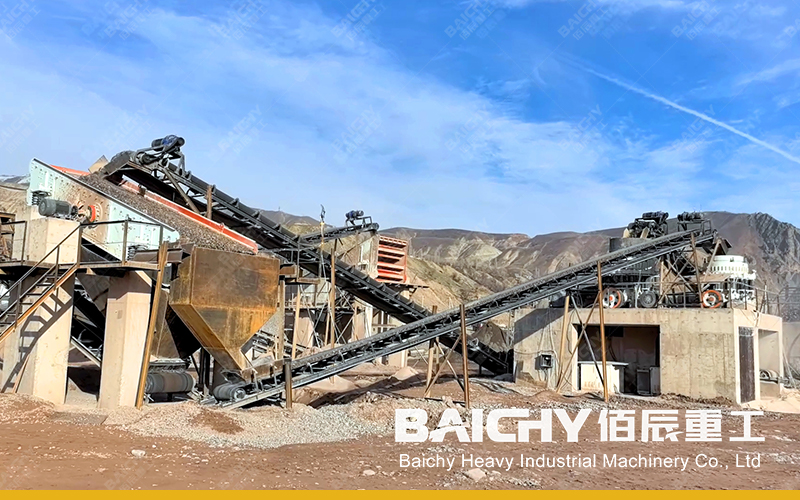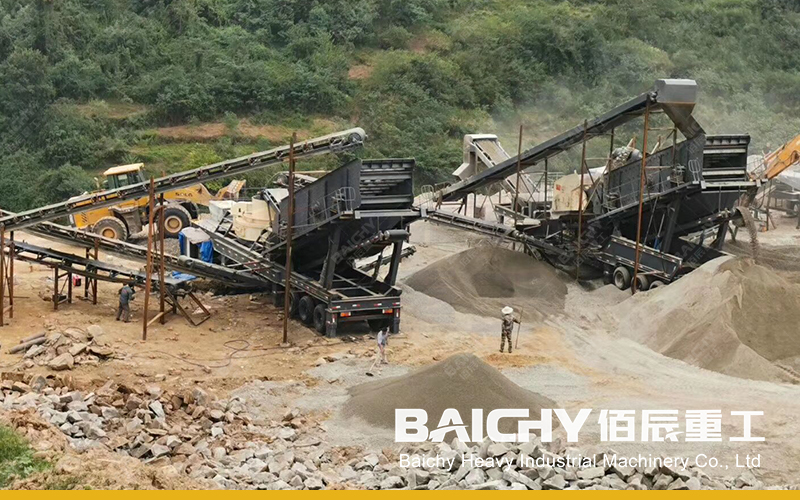
Mobile stone crushing equipment of 150tph (150 tons per hour), especially for crushing granite, limestone, and river stone, usually consists of multiple components and the design of this equipment will be adjusted according to the specific crushing requirements, material characteristics and production environment.
Jaw crusher is the primary crushing equipment. The jaw crusher crushes large stones into smaller particles through the squeezing action of the movable jaw and the fixed jaw. For a 150tph production line, the main machine usually uses the PE600x900 model.
The medium and fine crushing equipment can be a cone crusher or an impact crusher. This equipment are used to further crush the coarsely crushed stone to a smaller particle size. Cone crushers are suitable for hard stones such as granite, while impact crushers are more suitable for medium-hard stones such as limestone and river stones. The specific choice depends on the hardness of the material and the particle size requirements after crushing.

Other configurations of 150tph mobile crushing station:
• Screening equipment: such as a vibrating screen, is used to classify the crushed stone according to different particle sizes to meet different usage requirements.
• Conveying equipment: such as belt conveyors, responsible for conveying and transferring materials at each crushing stage.
• Mobile devices: including tire-type or crawler-type chassis, so that the entire crushing production line has the ability to move, which is convenient for transfer and operation between different sites.
150tph mobile crushing station configuration suggestions
1. Equipment selection: According to factors such as material hardness, particle size, output requirements, and production environment, select the appropriate crusher model and configuration. For hard stones such as granite, it is recommended to use cone crushers for medium and fine crushing; for medium hardness stones such as limestone and river stone, cone crushers or impact crushers can be selected according to actual conditions.
2. Production line layout: Reasonably plan the layout of the production line to ensure that the materials can flow and transfer smoothly while reducing energy consumption and wear.
3. Intelligent control: Use advanced intelligent control systems to monitor and adjust each link in the production process in real-time to improve production efficiency and product quality.
4. Environmental protection measures: Equip with necessary dust removal and noise reduction equipment to reduce dust and noise pollution during the production process and protect the environment and employee health.









